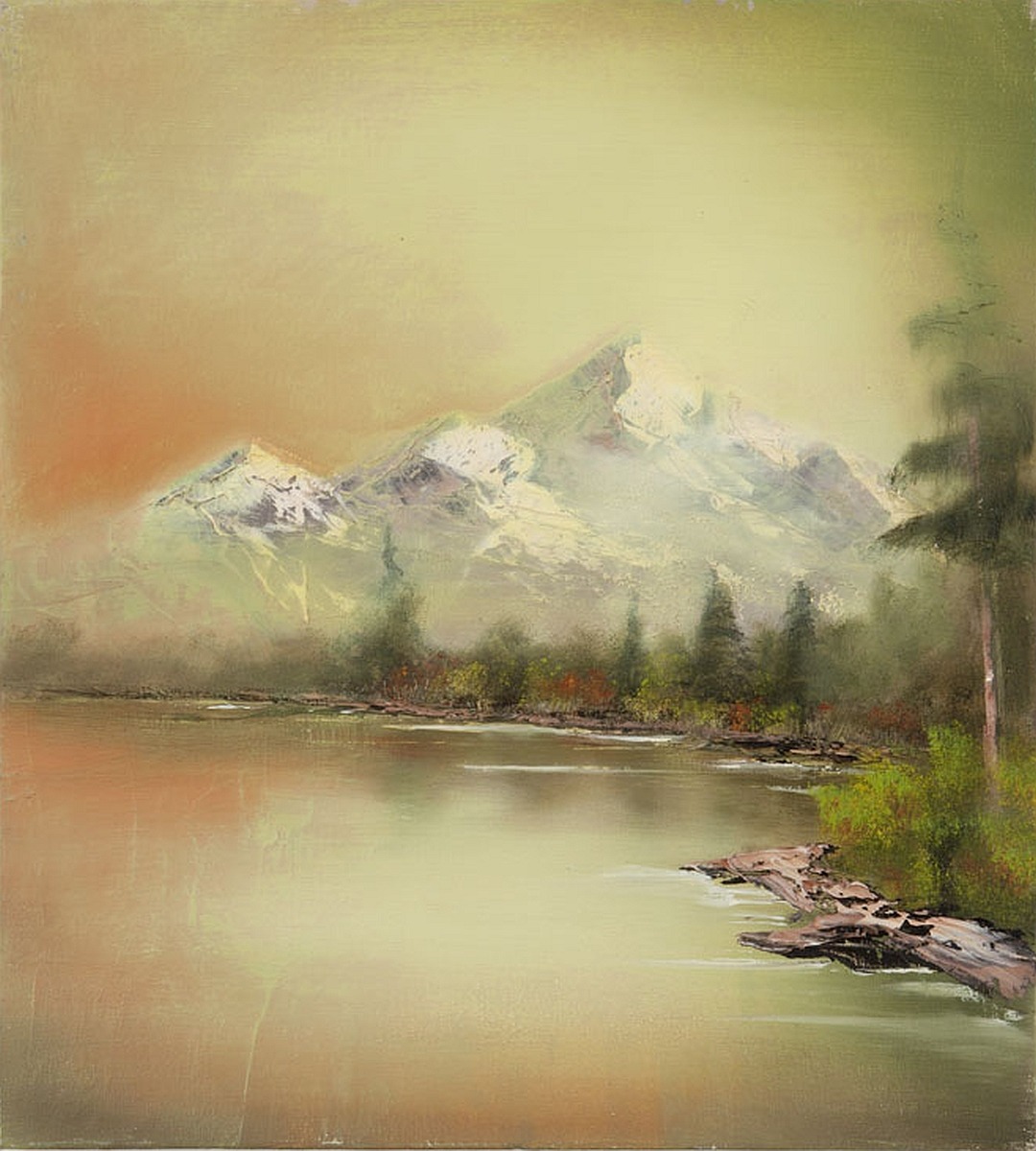When looking at Ull Hohn’s painting I feel a connection to his beautiful landscapes. This is one reason why I chose him over the many others. His framed masterpieces stood out to me because of the detail he used in his brush strokes. They felt alive the way he had given them so much texture and structure, but in a way they also seemed soft and abstract. The water of rivers and lakes were clear and realistic. But his trees, grass, and mountains had a fuzzy focus to them; making them almost blurred or smudged in a way. Not only did his art interest me so did his history.
When he was twenty years old, Ull Hohn moved from a small town in North-Rhine Westphalia to West Berlin to study painting at the University of the Arts. During this time, neo-expressionism started to become popular and so did Neue Wilden. But Hohn was not interested in angry, masculine painting; he rejected the broad brushstrokes and craziness of the Neue Wilden. He preferred a more controlled style, which he saw as “serial colour-configurations of pure painting”.
Four years later he moved to Düsseldorf to study with Gerhard Richter, who told him to stay at the academy after graduating and join his master class. But in the fall of 1986 he left Germany to head for New York. Hohn loved New York since it was not like the conservative and provincial ways of Dusseldorf. The New York art world had given Hohn a new outlook, especially when he started attending the Whitney Independent Study Program in 1987.
By 1993, near the end of his life, Hohn had completed many landscape pieces. Hohn had followed his instructions given by his professor but add blurs, reflections on water, and worked up surfaces put on by palette knife. He wanted to portray a kind of painting outside painting, but not to the point of over doing it. In his short life he offered new styles that consistently investigated the difference between de-skilled artistic production and painterly craftsmanship.
The dominant elements of 2-Dimensional design Ull Hohn uses that I noticed was color, and organic forms. Most of his art work was true to realistic nature scenes but I did see a few that strayed away from his usual landscape pieces. They had letters using lines and bright colors and I also noticed he had a few clay sculptures, which in my opinion looked like a mangled bricks.
Some conceptual concerns that Hohn addressed was how in New York the gay community was starting to feeling the effects of the AIDS crisis. As it spread and the outside world became even more opposed to homosexuality, the gay community in New York become more united and was gaining attention. Hohn also explained how the issues of identity and sexuality had become key themes in academia, while the black consciousness movement and second-wave feminism made their way into the critical discussion in art schools. Hohn began to intertwine his homosexuality into his work and eventually met his partner, Tom Burr. I feel the relationship between the formal concerns of the Hohn and the idea or concepts that he had definitely relate to his work because of this. He felt that by the way art schools started talking about homosexuality, the black consciousness movement, and second-wave feminism that it was the beginning of institutional critique.
(Here are some of my favorite pieces by him.)
(Here are some of my favorite pieces by him.)







No comments:
Post a Comment